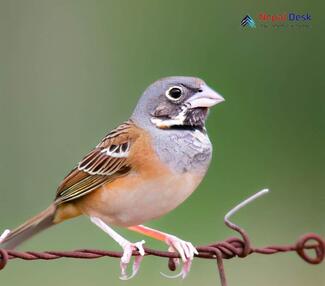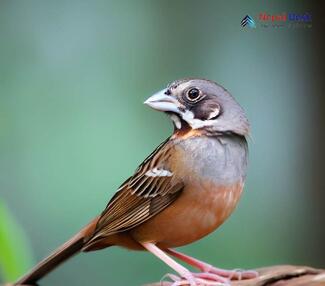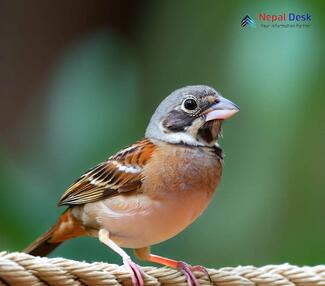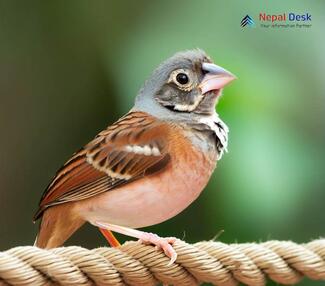Nestled within the world of avian creatures, the Grey-necked Bunting (Emberiza buchanani) is an intriguing species that deserves our attention and appreciation. From its fascinating taxonomy and striking physical features to its preferred habitat and diet, the Grey-necked Bunting is both an interesting bird and an essential part of the ecosystem. Today, we will delve into what makes this species so unique and explore its presence in the breathtaking country of Nepal.
Taxonomy: Where Does the Grey-necked Bunting Belong?
As a member of the Emberizidae family, the Grey-necked Bunting shares a genetic connection with fellow Emberiza species such as the Corn Bunting or Ortolan Bunting. These birds are typically found in Europe, Asia, and parts of Africa, known for their seed-eating habits and beautiful markings.
Physical Features: Unmistakable Beauty
The Grey-necked Bunting sets itself apart through its distinct plumage and markings. Adult males showcase a bold combination of grey, black, chestnut, and white feathers. The bird's head is primarily black, bordered by contrasting white eyering. Its throat and nape are colored grey, hence the name. A chestnut collar encircles its neck like a shawl, while the chest and rest of the body are adorned with white.
Females exhibit more muted colors compared to their male counterparts; however, they retain the same basic color patterns.
Habitat: Home Among Hills
Grey-necked Buntings inhabit open areas or grassy mountainsides between 2,000 to 3,600 meters above sea level. Preferring rocky terrains in arid environments or within montane steppe regions provides them with the perfect ground for nesting and foraging—which in turn plays a significant role in their diet.
Diet: Seed-Eating Specialists
Feeding predominantly on seeds, the Grey-necked Bunting's diet consists of grass and plant seeds found in their habitat. However, during the breeding season, these birds supplement their food intake with insects to accommodate the needs of their growing chicks.
Presence in Nepal: Mountain Visitors
Grey-necked Buntings have a special connection with the country of Nepal. Venture into the northern or western parts of Nepal between May and September, and you may witness these birds during their breeding season. While scattered in remote areas of the country, sightings are rare, making them an exhilarating find for bird lovers and enthusiasts.
Interesting Point:
The Grey-necked Bunting can be considered an indicator species in the context of ecology. Their presence or absence in an area signifies changes within their preferred habitat—such as soil quality or vegetation type—highlighting their role as environmental health ambassadors.
So there you have it—a comprehensive exploration of the Grey-necked Bunting shedding light on its taxonomy, physical features, preferred habitat, and diet, unique presence in Nepal, and its role as an indicator species. This extraordinary bird offers us a window into the natural world that can teach us about the intricate interconnectedness of ecosystems and inspire ongoing conservation efforts for generations to come.




